The Year 2024 in Review
Speech and Audio News
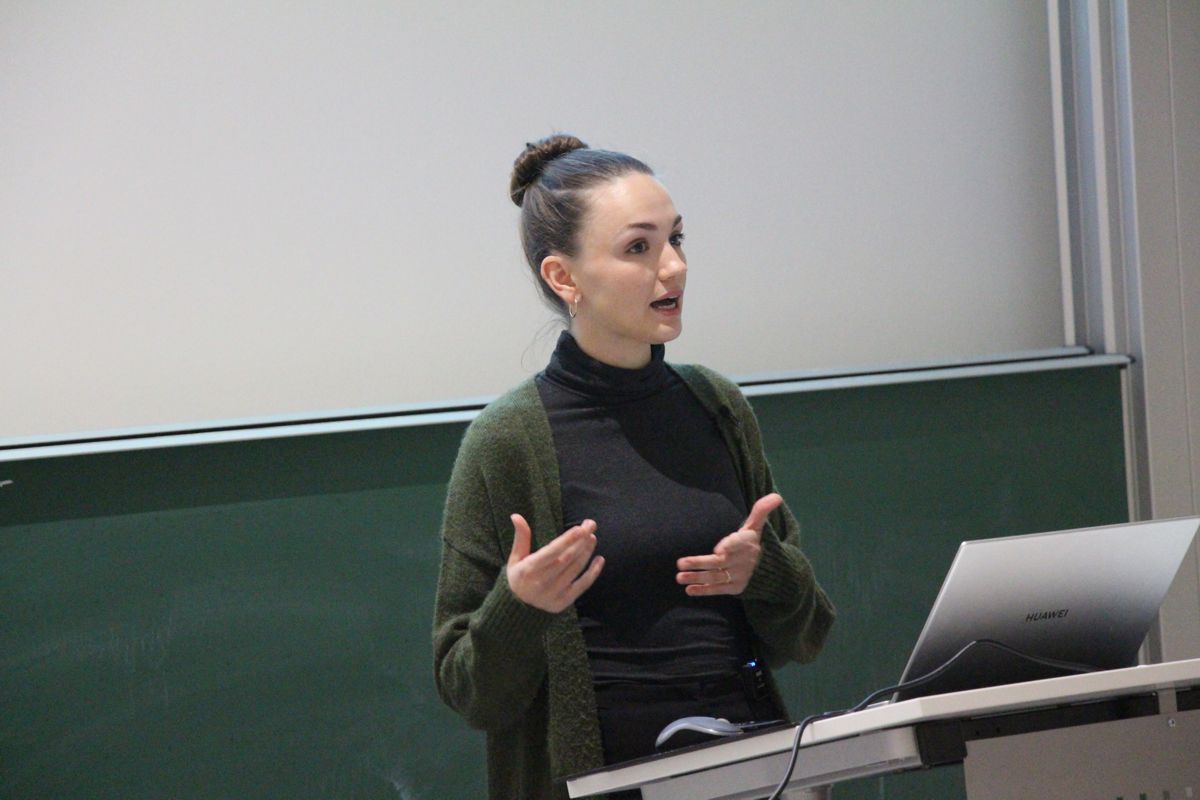 The audio team has not changed in terms of members. For Karolin Krüger, 2024 was characterized by the two collaborations initiated in 2023. In terms of auditory feedback modulation, i.e. changing one's own voice in real time in the sense of hoarseness and playing it back through headphones, the first study to investigate the effect was analyzed during the course of the year. The most effective approach to adding noise (noise in the sense of unvoiced signal components) was identified as part of a linear prediction, which was then to be further analyzed in a second phase of the study in terms of the intensity of the noise and the investigation of an aftereffect. For this purpose, Karolin implemented new functions and the new modes for the procedure. During the evaluation of this part of the study, a compensatory reaction to the auditory change was observed in healthy subjects, so we are eagerly awaiting the results with pathological speakers. Furthermore, in collaboration with two master's theses, we also worked on improving the effect in terms of naturalness. We first implemented a signal processing-based approach that includes more speech domains that influence hoarseness. Since such a system has a number of parameters that are difficult to parameterize, a second master's thesis was also started at the end of the year to investigate the change in the voice in terms of hoarseness using machine learning.
The audio team has not changed in terms of members. For Karolin Krüger, 2024 was characterized by the two collaborations initiated in 2023. In terms of auditory feedback modulation, i.e. changing one's own voice in real time in the sense of hoarseness and playing it back through headphones, the first study to investigate the effect was analyzed during the course of the year. The most effective approach to adding noise (noise in the sense of unvoiced signal components) was identified as part of a linear prediction, which was then to be further analyzed in a second phase of the study in terms of the intensity of the noise and the investigation of an aftereffect. For this purpose, Karolin implemented new functions and the new modes for the procedure. During the evaluation of this part of the study, a compensatory reaction to the auditory change was observed in healthy subjects, so we are eagerly awaiting the results with pathological speakers. Furthermore, in collaboration with two master's theses, we also worked on improving the effect in terms of naturalness. We first implemented a signal processing-based approach that includes more speech domains that influence hoarseness. Since such a system has a number of parameters that are difficult to parameterize, a second master's thesis was also started at the end of the year to investigate the change in the voice in terms of hoarseness using machine learning.
In the project with the UKSH, a precise test procedure was developed and implemented over the course of the year, so that tremors can now be recorded using accelerometers and EMG sensors, as well as video data, in parallel with the voice recordings. The comprehensive test was carried out in a series of tests at the TF with many members. Subsequently, some adjustments were made, but we can also add the data to the resulting database, as the extraction of updated features for the overall data set was also an adjustment as part of this preparation. At the end of the year, the first test recording was then carried out at UKSH to test the premises and conditions. In 2025, it will therefore be possible to start building the database of patients straight away.
Medical News
Moritz has been a member of the chair and in CRC 1261 since mid-2023. To this end, he put a lot of effort into the preparation and ultimately the successful execution of the CRC defense at the beginning of last year. Overall, the project (B2), which has now been extended for the third funding period, focuses on the magnetic localization of medical devices. The main subjects are ultrasound probes with magnetic sensors and a capsule with an integrated magnetic actuator for analyzing gastrointestinal function.
Over the past year, Moritz has primarily worked on preliminary tasks for this project. Using a self-built setup consisting of three nested Helmholtz coils, he generated a directed magnetic field. Through algorithmic evaluation of the excitation signals and sensor data in real time, he estimated the sensor characteristics. A nested control approach is used in this process, as the field direction must be changed when certain criteria are met, while at the same time, the step size of the underlying NLMS algorithm is adaptively adjusted. The result is an estimation of the sensor behavior dependent on direction and frequency, achieved with comparatively low temporal and measurement effort, which then incorporates the necessary modeling and assumptions for localization tasks. The improvement, expansion, and evaluation of this approach were significantly advanced over the course of the year and also documented in a journal publication. Furthermore, Moritz has helped with the start of the design of a new hardware setup for the localization tasks, identifying the necessary components, and planning the connections between the system components.
Patricia was in 2024 in parental leave. We wish her all the best and hope to see her back in 2026.
Tobias started at the chair in June 2022. His work focuses on the development of sensor gloves based on magnetic field sensors, which are to be used to control robot-assisted surgical systems. Last year, work continued on the algorithms for hand-movement tracking. Firstly, the basic approach for robust and efficient motion tracking was written down and published. Furthermore, a lot of research was carried out on post-processing, as there is still considerable artificial jitter on the movement when the required latency and real-time requirements are met. The existing uncertainties were analysed and how they affect the motion estimation was investigated. The software was further developed so that it is possible to track the movement of an entire hand. One problem at this point was that the sensors previously used were too large to be attached to small finger elements. The company Stefan Mayer was able to help us here and build us a suitable sensor configuration in which the sensor element and evaluation electronics were separated from each other. With the help of this, a first proof-of-concept could be provided. The sensors were sewn onto a glove with a needle and thread and a first prototype was put into operation.
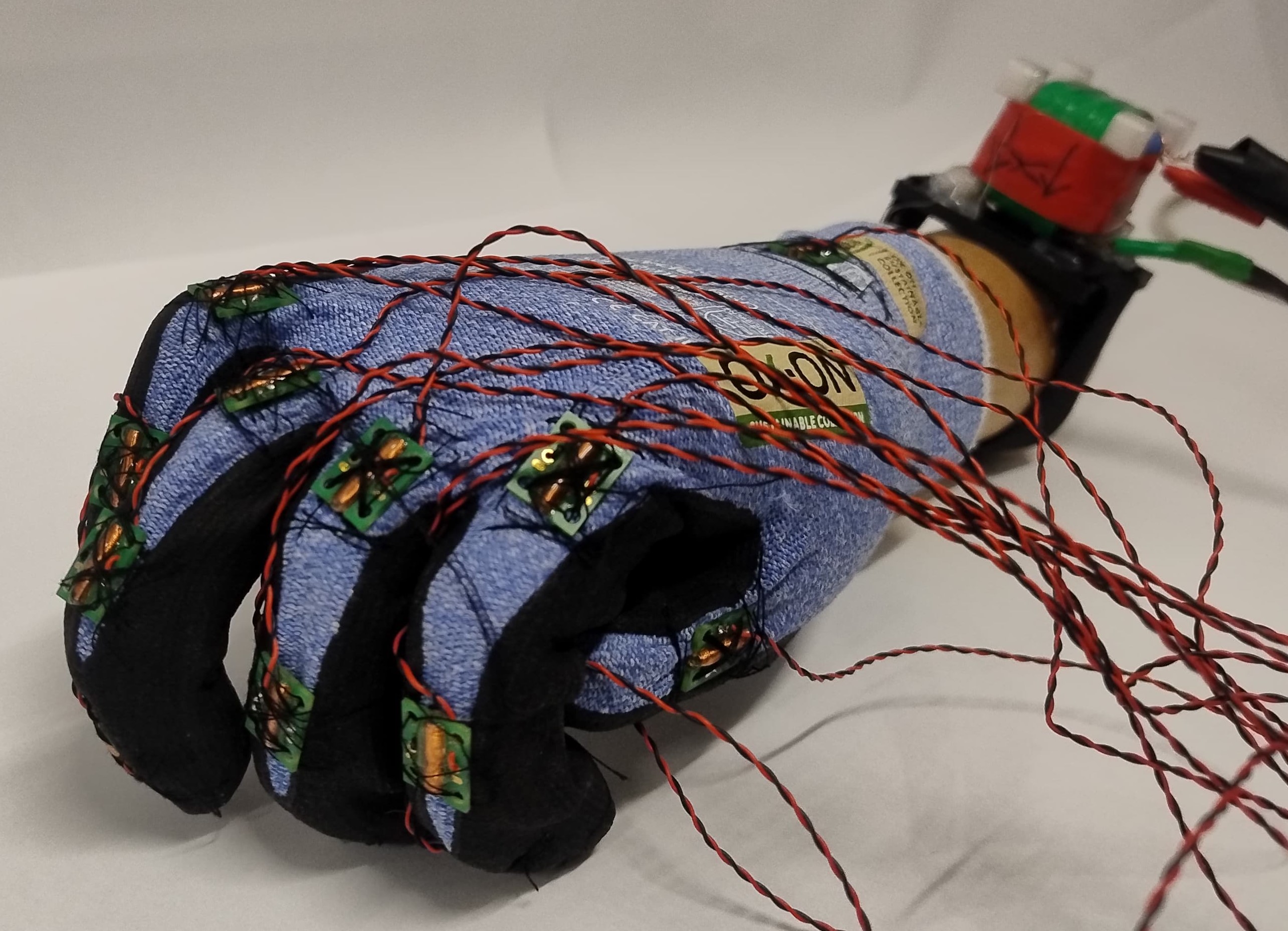 Tobias is half funded through outreach activities for schools. As part of this, several events were organised this year, such as the "Open Lab Day" or several school visits to a new school subject that deals with vocational orientation.
Tobias is half funded through outreach activities for schools. As part of this, several events were organised this year, such as the "Open Lab Day" or several school visits to a new school subject that deals with vocational orientation.
Over the past year, Erik has focused intensively on various projects related to non-invasive electroanatomical mapping. A significant milestone was the publication of our paper "Enhancing Non-invasive Electroanatomical Mapping with Dynamic Sensor Arrays" at the IEEE Sensors Conference, which he presented in October in Kobe, Japan. Johannes also attended the conference, and together they visited the SPRing-8 particle accelerator and Gentiane Venture's GVLab, which provided valuable insights for our research.
In the fall, Erik participated in the Computing in Cardiology Conference in Karlsruhe, where he presented a poster on all-pass filters in heart models. The positive feedback and scientific exchange brought important impulses for his work on optimizing propagation velocities in cardiac models.
This research topic has evolved into a central component of his work and resulted in a comprehensive journal paper titled "Gradient-based Optimization of All-pass Filter Networks for Non-invasive Electroanatomical Mapping," which is about to be submitted. Erik has also continued his theoretical work on the state-space model for estimating myocardial current densities, laying important groundwork for future clinical applications of our approach.
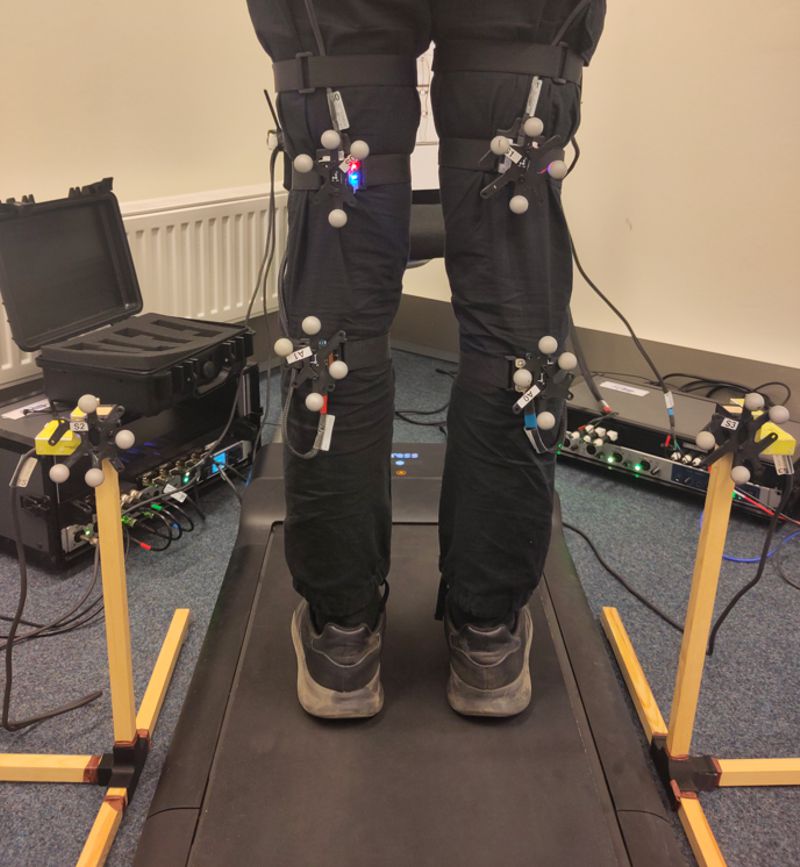 Johannes has been working on the magnetic analysis of human movement at the chair since summer 2020 as part of the Collaborative Research Center 1261. For the last year, he was mostly focused on the practical application of ME sensors in movement analysis. With the system established the year before, Johannes was now able to conduct larger scale gait experiments. He set up a system of four triaxial ME sensor arrays and two triaxial coils to measure distances between the participants lower limbs and to a fixed infrastructure. To overcome some of the limitations of the system (equalizing inaccuracies, sensor tilt), he conceptualized a system-level calibration scheme based on the optical reference system. With a gradient-descent approach, a correction matrix was optimized to minimize the error between the magnetic distance estimation and the reference for each actuator-sensor pair. With this method, an accuracy in terms of the mean absolute error of below 1 cm during gait measurements was achieved. An overview on the system and the calibration were published as “A magnetoelectric distance estimation system for relative human motion tracking”.
Johannes has been working on the magnetic analysis of human movement at the chair since summer 2020 as part of the Collaborative Research Center 1261. For the last year, he was mostly focused on the practical application of ME sensors in movement analysis. With the system established the year before, Johannes was now able to conduct larger scale gait experiments. He set up a system of four triaxial ME sensor arrays and two triaxial coils to measure distances between the participants lower limbs and to a fixed infrastructure. To overcome some of the limitations of the system (equalizing inaccuracies, sensor tilt), he conceptualized a system-level calibration scheme based on the optical reference system. With a gradient-descent approach, a correction matrix was optimized to minimize the error between the magnetic distance estimation and the reference for each actuator-sensor pair. With this method, an accuracy in terms of the mean absolute error of below 1 cm during gait measurements was achieved. An overview on the system and the calibration were published as “A magnetoelectric distance estimation system for relative human motion tracking”.
Johannes also presented adjacent topics such as “Proof of principle: Full 6D point-to-point motion tracking with magnetoelectric sensors” at “IEEE Sensors 2024” in Kobe, Japan and “ME cantilever sensors: From magnetic motion tracking to human gait analysis” at the “Workshop on Precision Sensing” at University of Minnesota.
SONAR News
In the year 2024, the field of underwater signal processing was characterized by many changes, both in terms of personnel and technological advancements.
Kosta started in January 2024 with his topic: "Feasibility of thin line arrays". The aim is do design a thin towed array using new sensor technologies. Instead of convential hydrophone nodes, several thin-film sensors can be used for a single node, referred to as a "Smart-Hydrophone". Another approach is the use of a distributed acoustic sensing (DAS) system, which enables acoustic sensing along an optical fiber by placing multiple sensors along it. In this system, the DAS system sends an impulse into the fiber, which is continuously backscattered due to anomalies within the fiber. The backscattered pulse can be used to determine the strain at the sensors positions along the fiber. Any impact on the fiber – such as an acoustic wave – causes a change in strain. The current focus is on designing a suitable hardware setup for the thin-film sensor, developing appropriate digital signal processing techniques, and evaluating whether DAS technology can be effectively employed as a towed array.
Lukas started his project on the detection of magnetic signatures in the maritime environment in May. Since then, he has been working on the development and implementation of measurement campaigns with highly sensitive magnetic field sensors to investigate wake currents from ships and their magnetic properties. In addition to laboratory set-ups, he carried out initial measurements under real conditions. He also used numerical flow simulations to better understand vortex structures such as tip and hub vortices. The aim of his work was to analyze the physical relationships between ship movements and measurable magnetic fields - an important basis for future maritime monitoring technologies.
Ralf started in July 2024 and joined the Sonar team with his topic: "Investigation of Distributed, Self-Sufficient Acoustic Underwater Sensors". The main goal is to design and test a suitable system for harbor surveillance to detect targets. Instead of relying on a single sensor element, multiple sensors are used to increase the information gain in target detection. The focus lies in signal processing to realize a real-time target tracking system. The system will be implemented in KiRAT and tested using the digital ocean simulation as well as multiple computers. Once suitable algorithms are implemented, the system will be tested and evaluated using real measurements from WTD 71. Initially, the focus is on passive detection. Sensors such as typical hydrophone arrays will be used, and vector sensors will also be investigated for this application. Additionally, further tracking approaches using active sources and MIMO techniques will be explored and compared.
Viktoriia began in October 2024 with the classification of ship hydroacoustic signatures through artificial intelligence (AI) methodologies. The initial phase involved extending the digital ocean framework within a real-time SONAR simulator, where the existing target object was generalized into a target group object to accommodate distributed local sound sources. Therefore, it improves the precision of acoustic signature modeling. Another enhancement includes the integration of multipath reflection physics, which now accounts for interactions between target groups, environmental objects (such as the sea surface, seabed, and bubble clouds), and receiver arrays (hydrophones).
 The water tank has been used intensively over the past year, primarily for testing and characterizing thin-film sensors. However, many other applications were also tested, including the first tests for underwater magnetic measurements. The measurement conditions around the water tank were improved last year.
The water tank has been used intensively over the past year, primarily for testing and characterizing thin-film sensors. However, many other applications were also tested, including the first tests for underwater magnetic measurements. The measurement conditions around the water tank were improved last year.
In the air, sound absorbers have been fitted to the walls to reduce ambient noise, particularly from the ventilation system. This has significantly reduced the reverberation time of the room impulse response. Underwater, an acoustic insulation mat was attached to one of the tank walls to conduct the first characterization measurements of its attenuation properties. The idea is to cover all of the tank walls fully with insulation mats to dampen unwanted reflects at the tank walls and further reduce reverberation.
Our annual measurement campaign at the WTD took place again in 2024. In the middle of September, the transducer array was set up in the submarine hall and different scenarios were measured. We were able to successfully test our newly implemented signal processing techniques such as (three-dimensional) near-field beamforming, a multi-channel Wiener filter, underwater communications and different SONAR modes in a real-world environment. Additionally, we gained many useful insights. There was also a successful demonstration in the MaSD project at the WTD. A new projector array with 3 x 3 elements was used. A self-developed buoy containing data processing and communication hardware, with thin-film hydrophones mounted in a tube, recorded the transmitted signals from the projector array. These were sent to a main node where they were visualized. This system will be expanded in the future.
We have made further important progress in the field of thin-film technology. To ensure high signal integrity, we thoroughly investigated and characterized the entire measurement chain, including all components. Based on this, we developed new preamplifiers that could improve the signal-to-noise ratio in the future. We also built a new rotation stage that enables the sensors to be rotated and precisely characterized in both azimuth and polar angles. Many other factors were investigated, which will now be examined in more detail in the future – including the sensor backing material, the sensor impedances in combination with the cables, the potting or filling material, and the sensor connection to the downstream circuit board.
In the course of these developments, we as signal processors have also learned a lot: The requirements of thin-film sensors have led us deeper into the design of hardware, especially circuit boards and analog circuits. This knowledge has increasingly flowed into our work and has significantly strengthened our understanding of the overall system.
Our collaboration with materials scientists has further intensified. We are now tackling challenges even more closely together and have established an efficient division of labor that enables us to develop targeted and rapid solutions. This close cooperation has not only accelerated the process of finding solutions but also improved the quality of the results. In close collaboration, new capsules and cables for the sensors were also developed and manufactured, which drives the overall development forward.
In conclusion, the underwater sector is experiencing significant growth, which is expected to continue in 2025.
 ...
...
Outreach
Since Tobias is now responsible for our outreach activities in terms of school outreach, a lot of events took place. Tobias visited several school classes and explains what electrical engineering means and did several demos for the school students. In addition, the so-called "open lab day" at the faculty of engineering is now an established event that takes place a few days before the school summer holydays start. Details about these events can be found on a special website.
Some Numbers
-
This year the number of publications was a bit larger compared to 2022 - we published five journal papers, eleven conference papers, and three book chapters.
-
Comparted to 2022 we were agian able (as last year) to increase the number of bachelor and master theses. 14 theses were started in 2023: two bachelor theses and 12 master theses.
-
In terms of doctoral degrees we "extended the name" of two people: Robbin Romijnders and Arthur Wolf sucessfully defended their research in 2023. Congratulations to both of them.
Our "GaS Club"
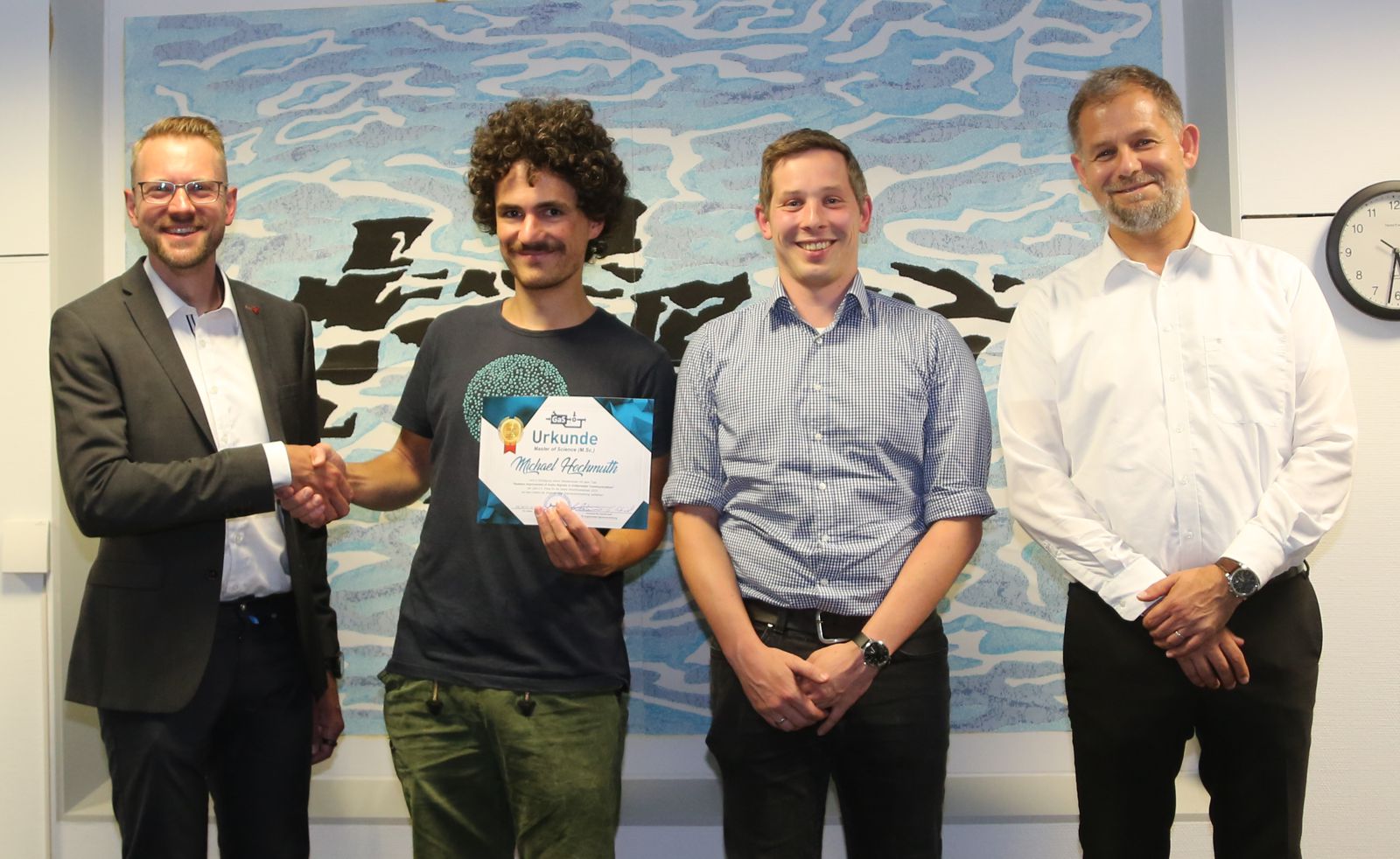 The "Gesellschaft für angewandte Signalverarbeitung" (GAS) currently have 43 supporting members and two companies.
The "Gesellschaft für angewandte Signalverarbeitung" (GAS) currently have 43 supporting members and two companies.
The society annually awards the best thesis in the field of digital signal processing and system theory. Particular attention is paid to scientific and technical claim and the practical relevance of the work. The complete DSS-Group evaluates the student’s commitment, their ability to work multidisciplinary and in a team. This year Michael Hochmuth received the award for his master thesis “Realtime Improvement of Audio Signals in Underwater Communication”. In addition, Mr. Hochmuth was able to present the results of his work at the DAGA (annual conference for acoustics) and exchange ideas with interested parties and other researchers.
Some Pictures from 2024
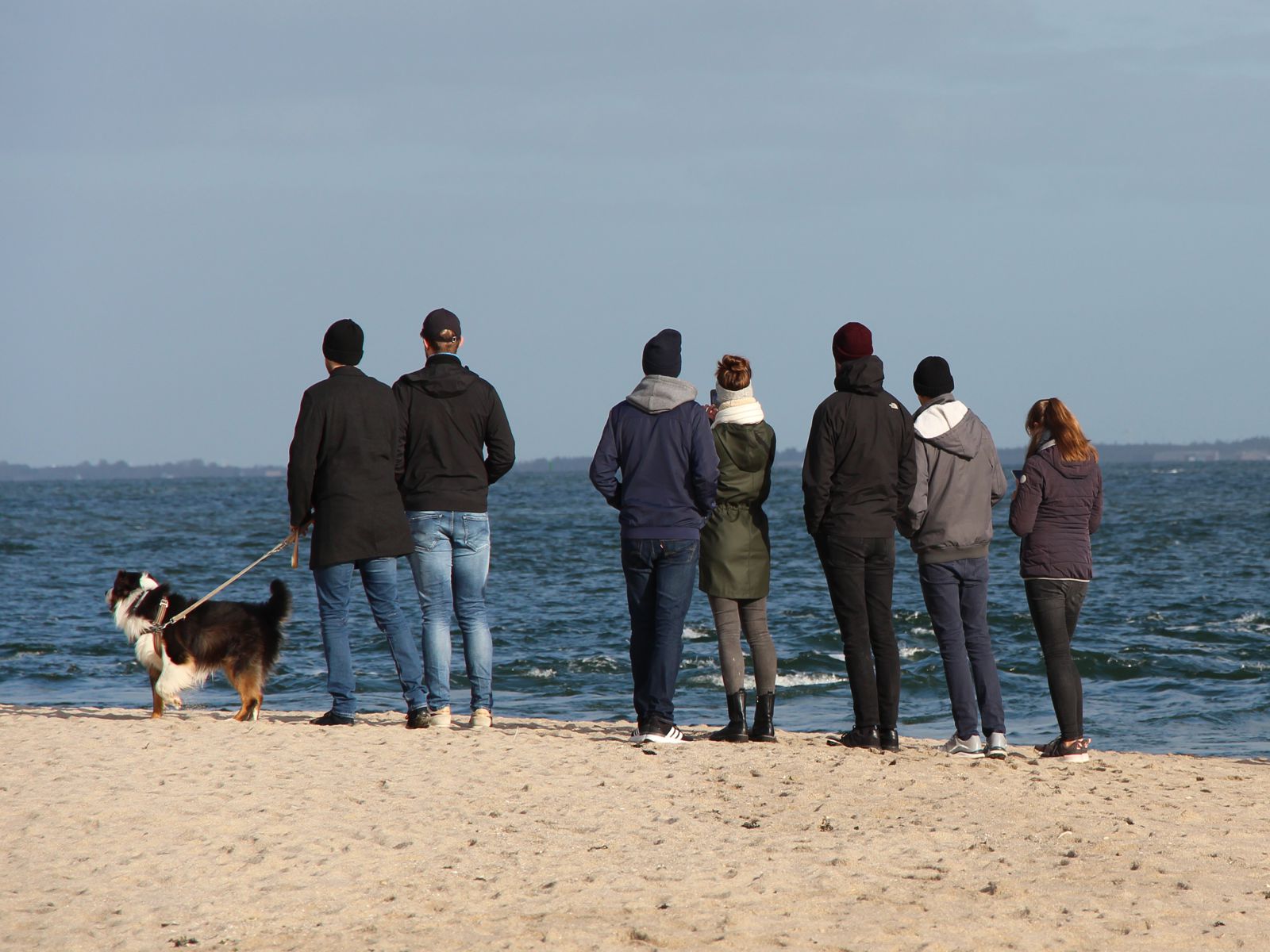 |
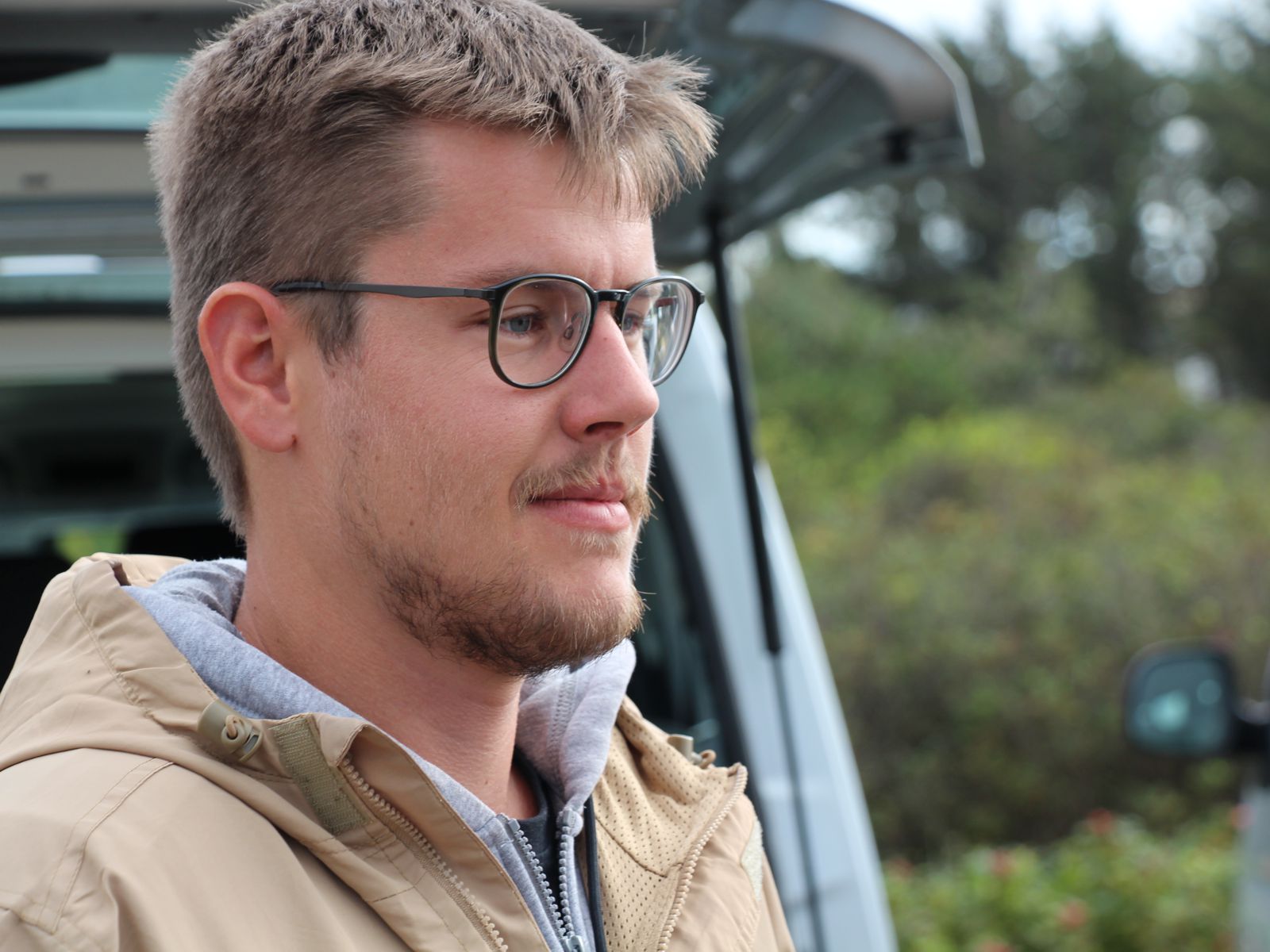 |
|
|---|---|---|
| Looking at the Baltic Sea ... | Finn Röhrdanz - one of the new doctoral researchers in the group ... | |
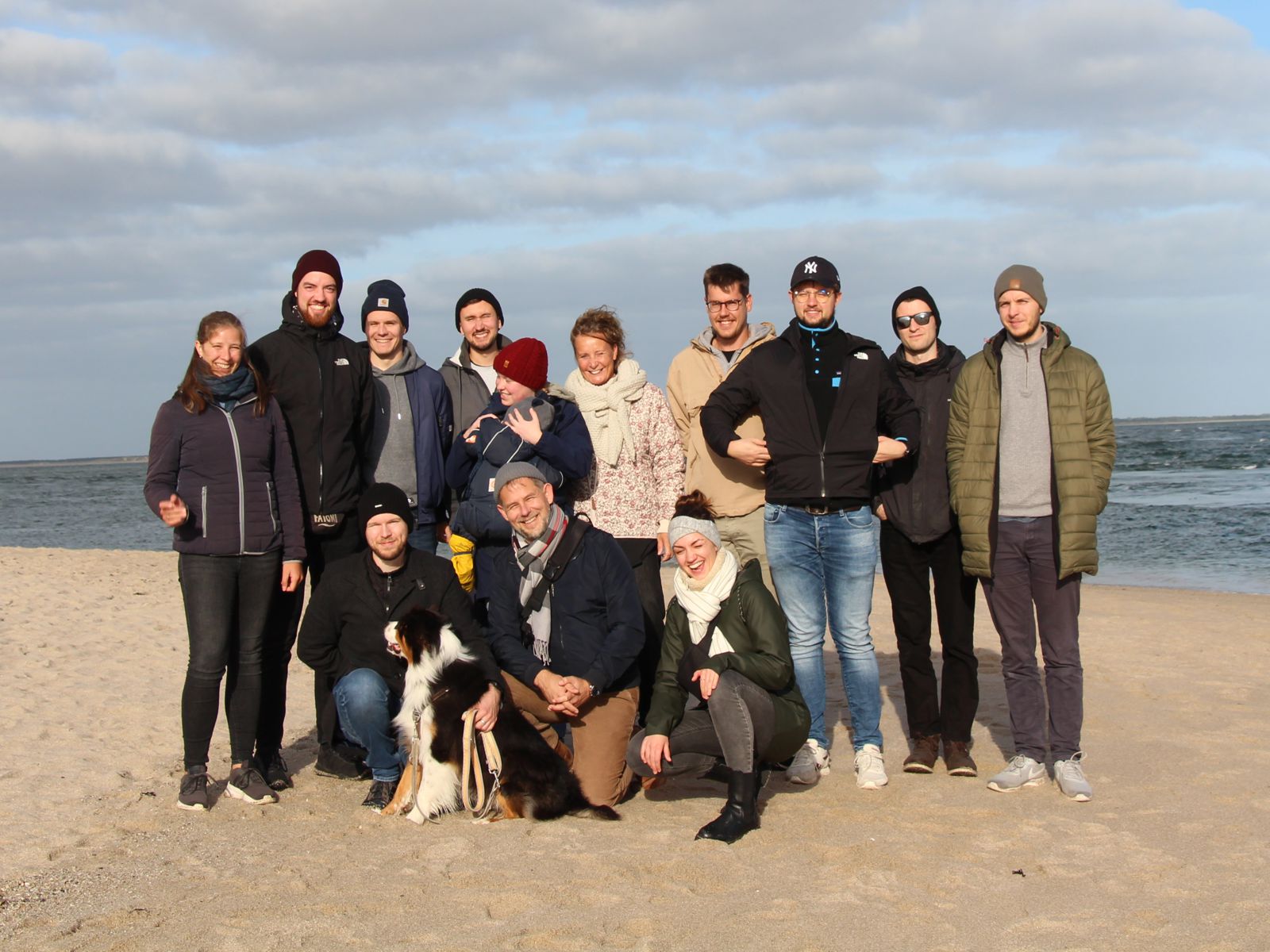 |
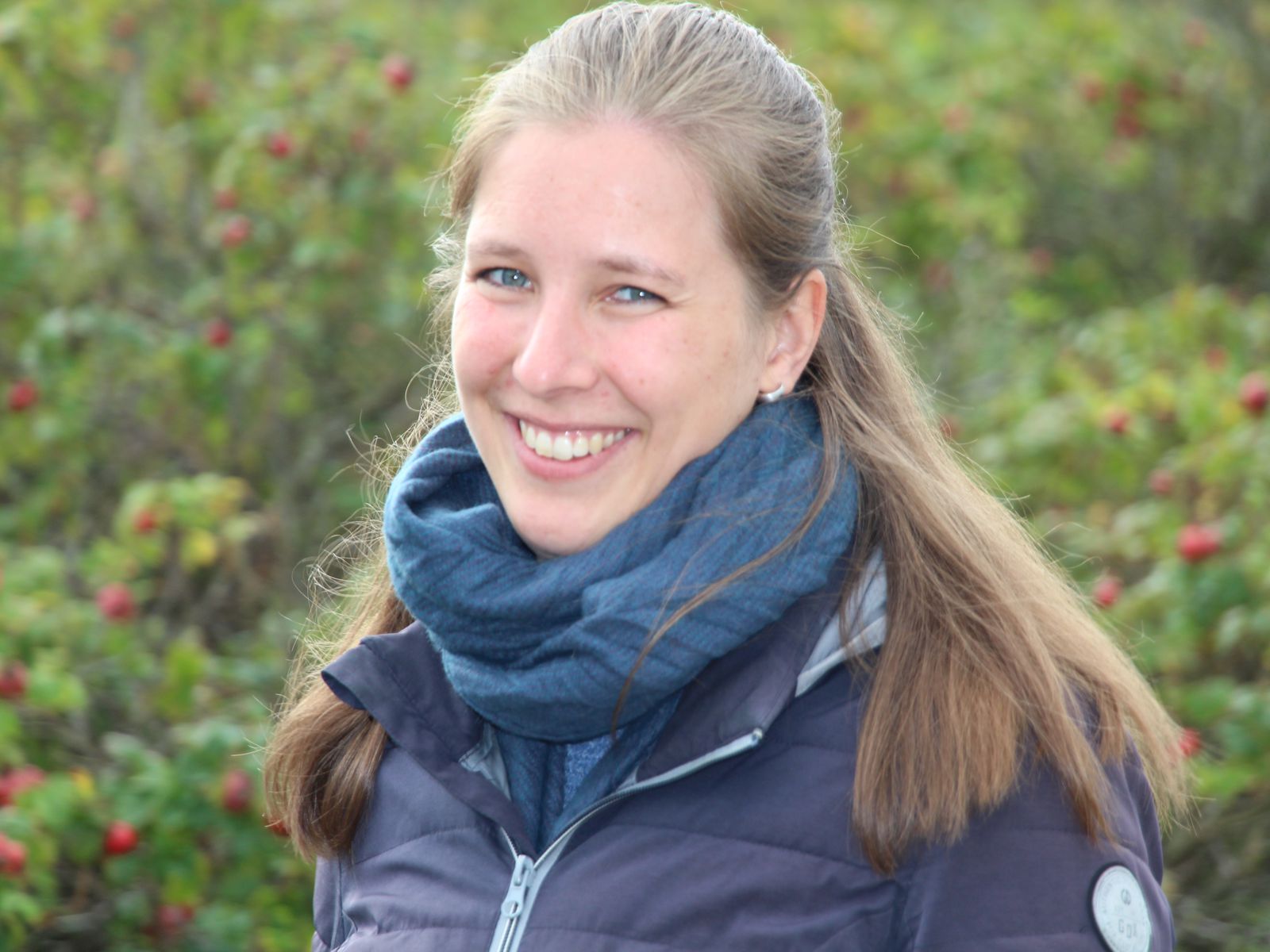 |
|
| Group picture during our DSS Sylt retreat ... | Karoline Gussow -also new in the DSS team ... | |
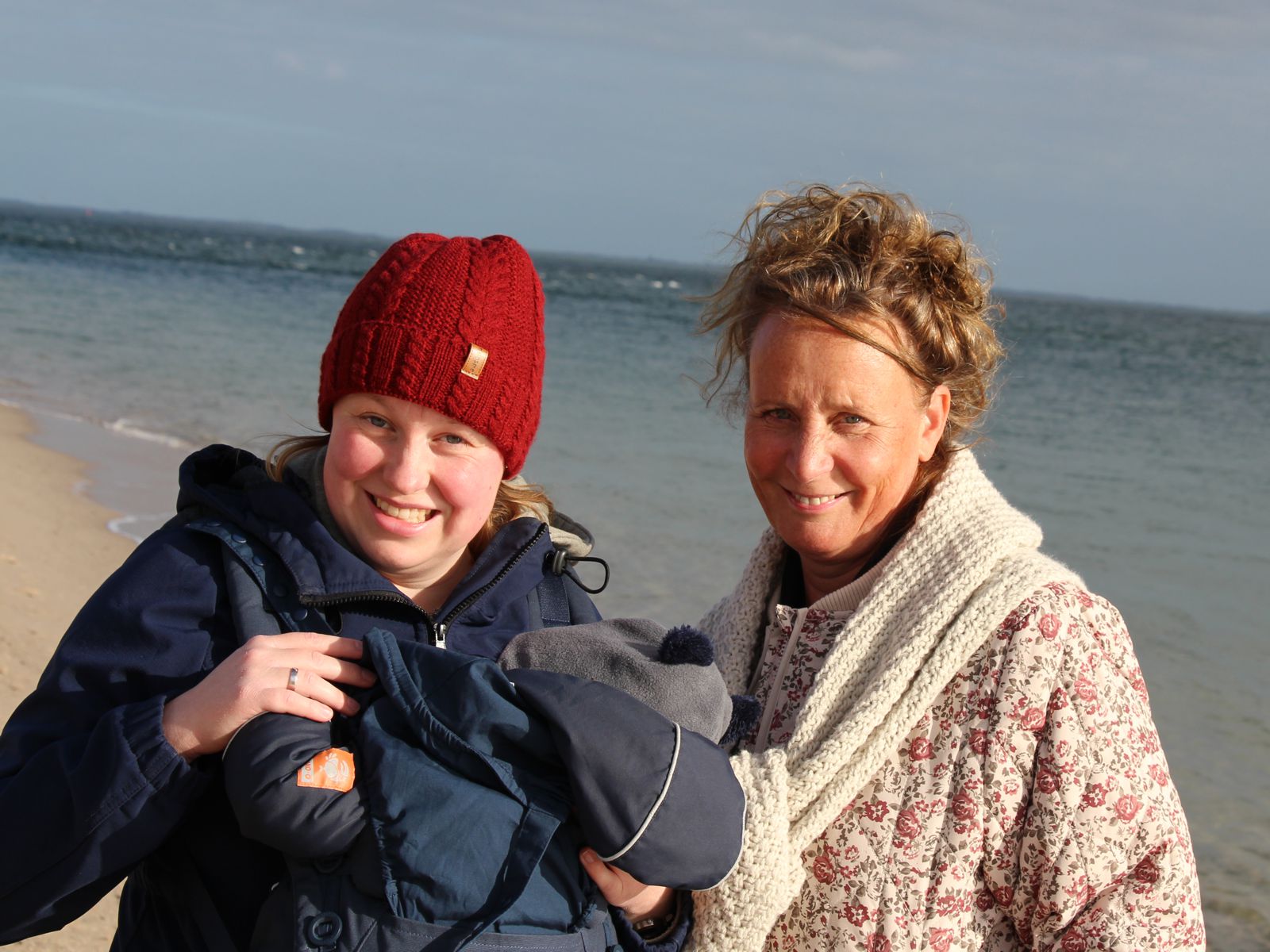 |
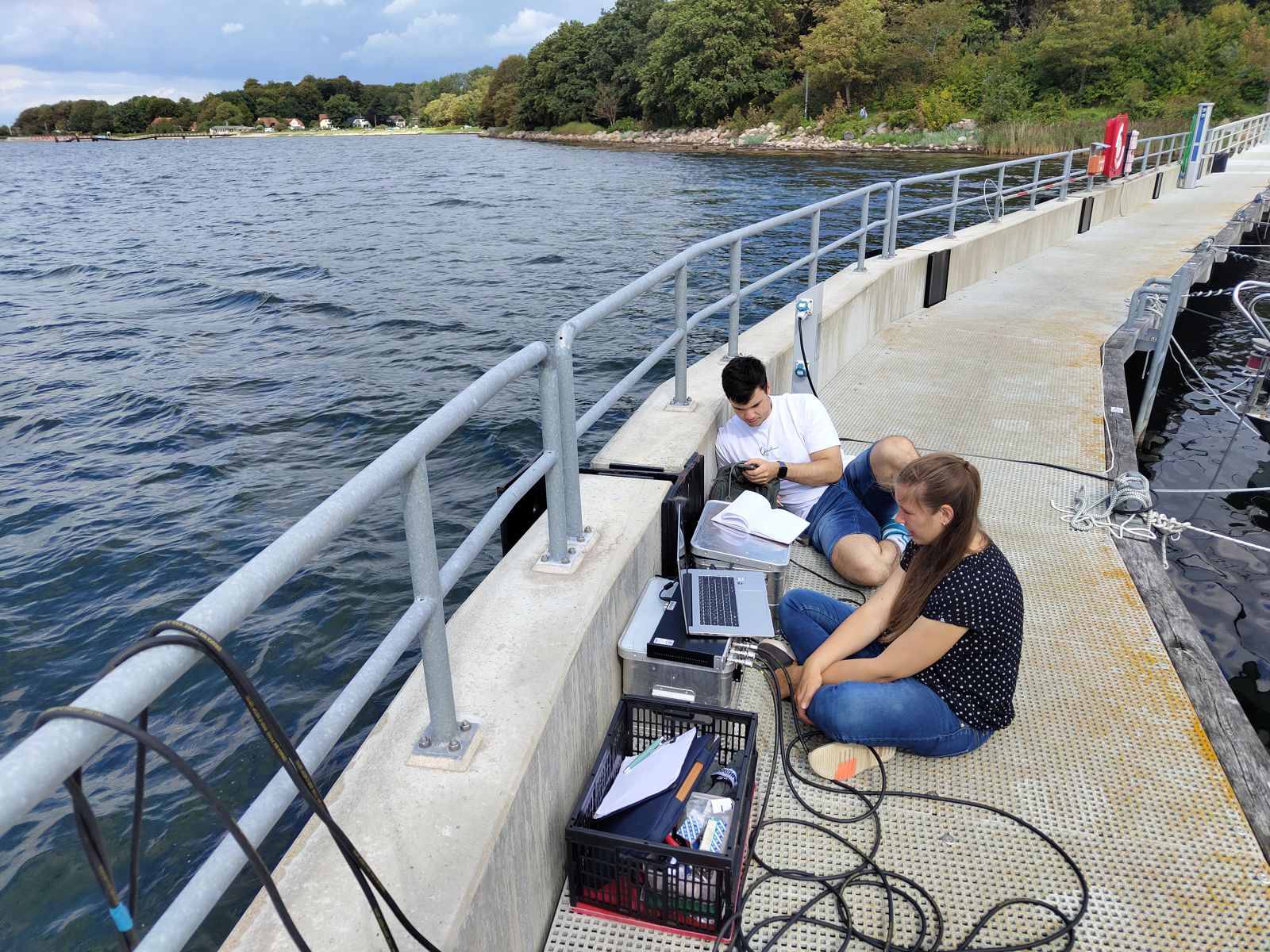 |
|
| Patricia and Petra - enjoying a long walk on the beach ... | Karoline and Kosta while doing underwater ship recordings ... |

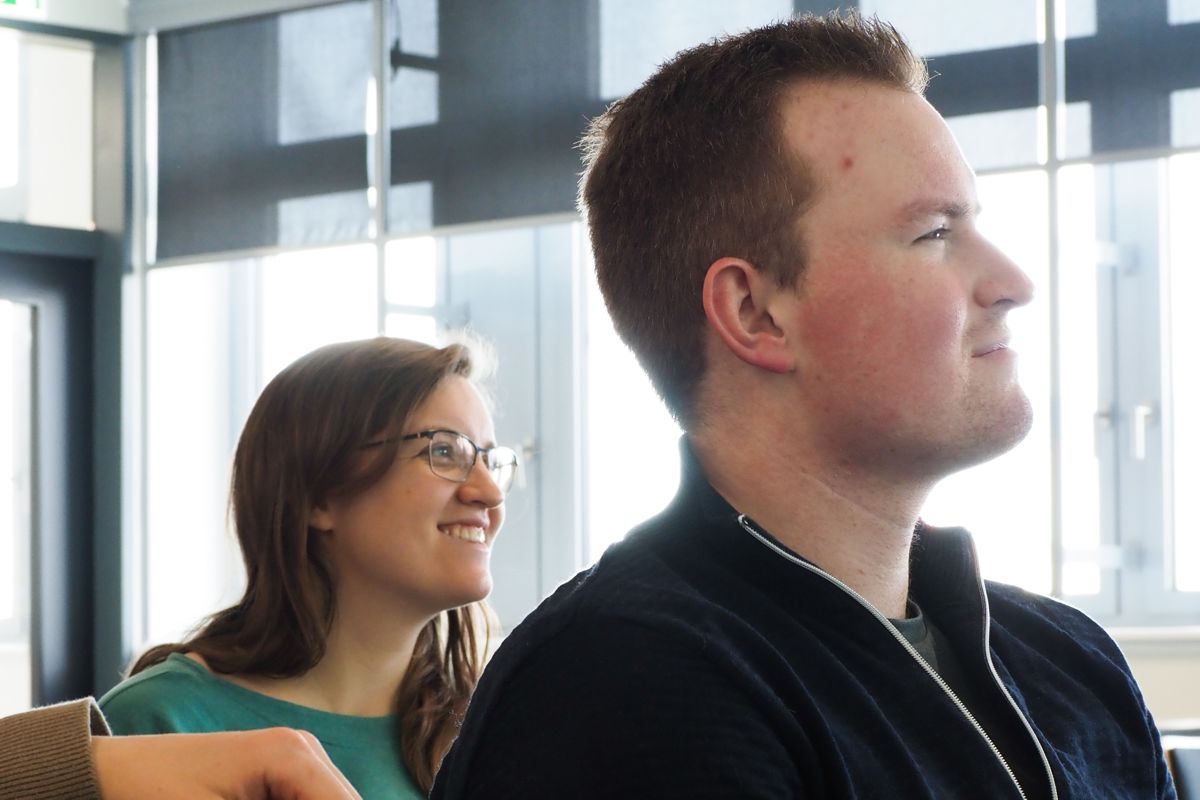 Visit of the Hans Böckler Foundation
Visit of the Hans Böckler Foundation